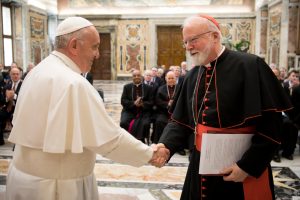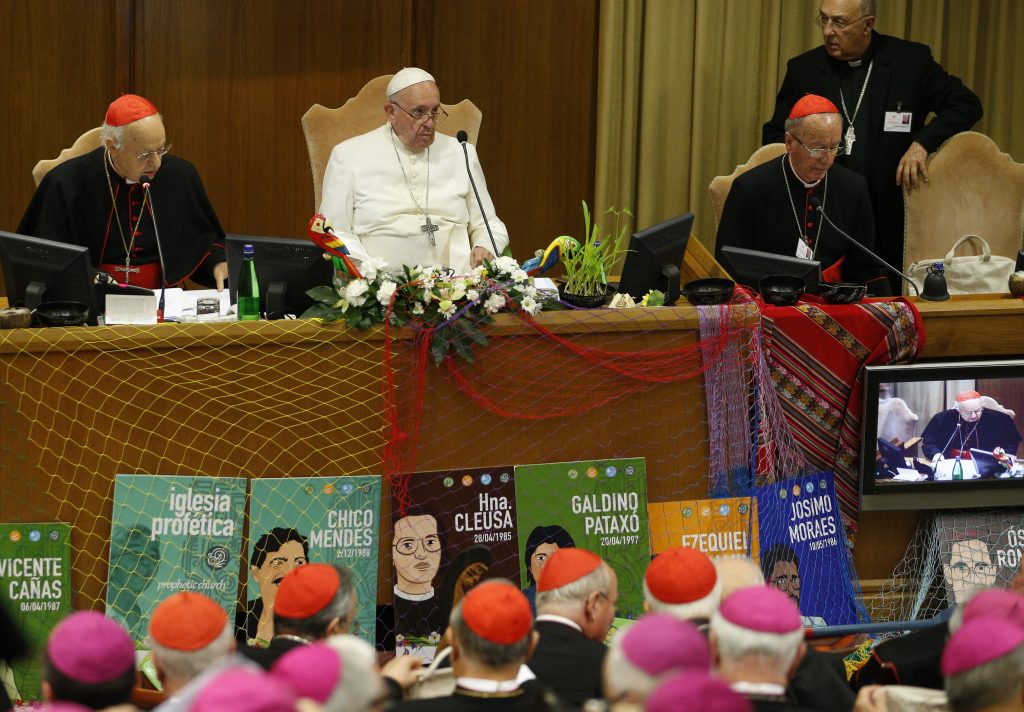ROME — While there haven’t been many slow periods for Catholic news junkies since the beginning of Pope Francis’ pontificate in 2013, the release of three major documents expected in the first half of 2020 suggests that this year, the Vatican news cycle is getting ready to kick into an even higher gear.
While very different in nature, the documents all reflect Pope Francis’ desire to reform the Church in three key areas: the Church’s missionary outreach, its response to the clerical abuse crisis, and the reform of its central bureaucracy in the Vatican, the Roman Curia.
The title is still to be determined, but first up should be Pope Francis’ post-synodal apostolic exhortation on the Amazon region. It will be the pope’s own written conclusion to a process centered on the three-week meeting of bishops in Rome last October.
As had been the case during the 2014/2015 Synods of Bishops on the Family, much of the discussion, both inside and outside the synod hall, turned around “hot button issues.” Then, it was access to the sacraments by divorced and civilly remarried Catholics. Last fall, it was the question of ordaining “married men of proven virtue” into the priesthood and the possibility of ordaining female deacons.
Though the publication date for the document remains unknown — possibly as soon as this month — sources say it has already been signed by Pope Francis, who had originally expressed hopes of being able to finish it before the end of 2019.
Trying to guess who “won” each debate is a fool’s errand at this point, not to mention a direct challenge to the pope. In his final, and off-the-cuff, remarks during the Oct. 6-27 Synod of Bishops for the Pan-Amazon region, Pope Francis called on Catholics not to be bogged down by “intraecclesiastical” debates.
There are some “elite” Catholics, he said, who will focus on the “little things,” failing to see the forest for the trees, focusing on “disciplinary things” that though important, are not at the core of the synod.
Instead, he urged Catholics to focus on the four diagnoses the synod made: cultural, social, pastoral and ecological.
Pope Francis was also openly critical of the synod’s final document, which is a series of suggestions made by participants to the pope, saying that it “falls short” when it comes to the role of women in the transmission of the faith.
“We haven’t yet comprehended what women mean for the Church and we stay on the functional side,” he said, in terms of their merits to be on commissions and other positions in the Church.
“The role of women in the Church goes much further than functionality,” he said.
The second highly anticipated document is the “McCarrick report”: a dossier expected to draw on documentation from the Holy See of former American Cardinal Theodore McCarrick’s rise through the ranks of the Catholic hierarchy and its internal response to abuse accusations dating back multiple decades. The report is not being prepared by Pope Francis, but at his request by several Vatican offices.
Considered a key player both in the U.S. and global Church, the disgraced man was removed from the priesthood last year after being found guilty of, among other crimes, sexually abusing minors.
During their recent “ad limina” pilgrimages to Rome (from the Latin “ad limina apostolorum,” which means “to the threshold of the apostles”), several U.S. bishops who met with the pope and other Vatican officials brought up the report, and acknowledged the importance of publishing it and doing so in full.
Presenting a “summary” of the findings would most likely backfire on the Holy See, as too many people were involved in collecting evidence, and a leak would occur sooner or later.
Expected to be a bombshell since several heavy hitters, including Cardinal Angelo Sodano, the secretary of state under St. Pope John Paul II, and the late pope’s personal secretary, Polish Cardinal Stanislaw Dziwisz, who have long been accused of covering up for McCarrick, the report will either be a turning point in how the Church deals with the abuse crisis or a black mark on this pontificate.
The result will depend on the extent of the information released and what is done with those found guilty of protecting McCarrick as he went up the ranks.

Expected to be the last of these documents to be released, but not the least important, is the Vatican’s new constitution, which was written by the council of cardinals that has advised the pope since the beginning of the pontificate, including Boston Archbishop Cardinal Sean O’Malley.
Titled “Praedicate Evangelium,” meaning “Preach the Gospel,” the draft of the constitution, which replaces the one approved by Pope John Paul in 1988, was finalized last year, and sent to all the national bishops’ conferences for feedback.
The consultation took longer than expected, and thousands of suggestions were made leading to the delay in its publication. The council of cardinals is meeting later in February, and they are expected to give a final green light to the document then.
In scattered interviews throughout 2019, some of the members of the C6 (Council of Cardinals) have hinted at its content, with two elements being particularly newsworthy: the creation of a “mega dicastery” for evangelization, which would take a place of primacy even over the historic Congregation for the Doctrine of the Faith; and a Roman Curia that is more at the service of the local churches.
The impact of these three documents remains to be seen, but the buzz they are generating even with “to be determined” titles is not without merit: All three could leave a permanent imprint on the reform that began when the College of Cardinals elected an Argentine as pope.

